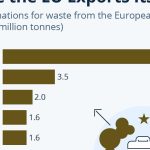As a good Gen Z, you have probably already used ChatGPT at some point and discovered all the functions that, in a moderate way, you can take advantage of its use, such as summarizing complex information and even obtaining entertainment recommendations. Well it turns out that OpenAIthe same group responsible for creating ChatGPT is back with another innovative product: sorathe new multimedia design artificial intelligence producer.
Today we want to shed a little light on Sora and the functionalities it has for the field of multimedia design, especially in an era in which visual communication is more vital than ever.
In addition, we will explore the role of university training in the acquisition of the skills to use AI and, above all, the advantage that the Bachelor's Degree in Multimedia Design from the Anáhuac Querétaro University is being taken to the national level. Anyway, we'll see a little about everything, ready? Let's get started.
Sora's creative revolution in Multimedia Design
In the midst of the boom artificial intelligence In the world we live in, many still have reservations about the extent to which we should take advantage of this type of technology, if we should use it in the first place. However, it is convenient to understand its applications for the development of design solutions. Who knows? Maybe we'll end up learning something fascinating
What is OpenAI Sora?
Firstly, Sora is a diffusion model, which means that it eliminates “noise” from images to eventually generate natural images. Through instructions that the user provides, this “text-to-video” model is capable of creating videos up to one minute in length, and maintaining certain standards of quality and consistency with said instructions.
Thus, Sora joins other multimedia generation models, such as DALL-E 3, StageDiffusion and Midjourney, which have broken paradigms regarding what a multimedia designer can and should do. Innovations in the machine learning model have allowed Sora to demonstrate certain improvements over other models, such as:
- Temporal and motion consistency: Sora considers multiple video shots at the same time, allowing objects to remain consistent even when they disappear from the frame.
- Combines functions of diffusion and transformer: this makes it possible to create “pieces” of content, organized in an appropriate way, for the generation of videos. Both qualities help save us certain steps and solve computing problems of previous models.
- Videos with higher fidelity: Sora also uses a technique to rephrase the prompt or the instructions provided by the user, to make them as precise as possible, and thus optimize image generation.
Applications (and limitations) of Sora
In general, using Sora is being very useful for those who want to create multimedia content, specifically videos, from scratch, or even enrich and optimize existing videos.
Social networks
Sora's destination par excellence is social networks, especially Instagram and TikTok, where the duration of the videos does not usually exceed one minute, and coincides with the maximum length that Sora allows so far.
Marketing and publicity
In this area, the creation and production of videos can be very expensive, which is why Sora is emerging as a really attractive option to reduce the investment of time and money. Generating images that are difficult to recreate for these reasons, such as aerial shots or isolated location shots, is especially valuable.
Concept prototyping and visualization
In industries such as industrial design, architecture or simply in any industry where you need to present a concept that is difficult to replicate right off the bat, Sora could be your ally. You can create mockups with relative skill and although, in the end, the product does not have much to do with the images created by Sora, it can promote an initial prototype presentation.
Sora's current limitations
For now, OpenAI warns about the early state of Sora and several areas of opportunity that should be improved over time. Some of them have to do with the dubious reliability with which this model interprets certain rules of the “real world”, such as the law of cause-effect or even the Pauli exclusion law, which dictates that two objects cannot be at the same time. time in the same place.
The latter is quite common in image generation and is colloquially known as “AI hallucination”, as it results in images that do not adhere to the principles of nature, nor are they consistent with reality.
Ethical and safety implications in the age of AI
The difficulty with which the model proposed by Sora still fails to create images that are 100% free of inconsistencies results in serious problems that have already been brought to the field of ethical debate, security and technological privacy.
In particular, AI's detractors condemn how it can be used to create disinformation, whether intentionally or unintentionally. In the era of information overload we live in, fact-checking is increasingly difficult and impractical, so many take advantage of the tool's ability to create relatively convincing images for their own benefit.
The problem is even greater when it alters people's perception of, for example, a public figure, such as a president or a historical event. This is where the manipulation of information can also persuade people and their decision making. Not for nothing Eske Montoya Martínezdirector of AI governance and ethics at DigiDiplomacy, warned that “AI is already changing campaign strategies, voter participation, and the very fabric of electoral integrity.”
The irreplaceable value of the Multimedia Design expert
No matter how uncertain the future may seem, we are sure of one thing: that human capacities for innovation, creativity and imagination have no limits. This is why at the Universidad Anáhuac Querétaro we firmly believe in the potential of the students of the Bachelor's Degree in Multimedia Design to become experts in the production of various media that stand out for their aesthetics, functionality and readability.
Thanks to a training that combines the theory of art and design, with extensive practice in various media, designers function without problem in the following areas:
- Analog and digital illustrations
- motion graphics
- 2D and 3D animation
- Mobile apps
- User interfaces and websites
- Virtual reality and augmented reality
- Audiovisual production
Furthermore, and this is vital, unlike Sora (or any other AI tool), multimedia designers have the critical ability to understand their reality and make relevant decisions that, in addition to being useful, cause a true impact on their audience. As you see, design is much more than combining images in a more or less attractive way: it is using both your talent and passion to create something new and beautiful.
You already know: at Anáhuac Querétaro we believe in you for who you are and what you contribute to the world. Imagine what you can achieve by joining our university community and becoming a Lion! The opportunity is here and today you too can design the future you long for.
To discover more about our program in Multimedia Design, contact us and we will be ready to answer all your questions.



